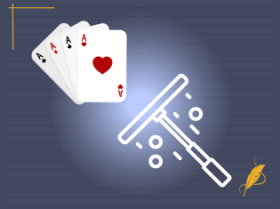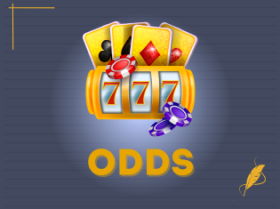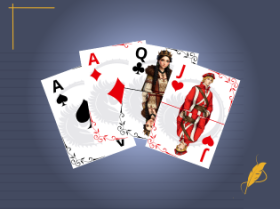A straddle refers to a voluntary blind bet–usually twice the size of the big blind–placed before the dealing of cards. It is usually made by the player to the immediate left of the big blind. The idea behind this is to purchase the right to act last during the first betting round. This step is very important, as it can change the dynamic of the hand. It’s not just a blind, but a strategic move to change position and pot size.
Keep in mind that a straddle is not the same as a simple blind wager. Blinds are mandatory and move around the table clockwise, while a straddle is optional and can influence the game’s pace.
Types of Straddles
Straddles come in a few different types, depending on the table rules and the casino you’re playing in.
| Standard Straddle | This is the most common type. The first player directly left of the big blind, referred to as the Under the Gun (UTG), makes a bet, often equal to twice the big blind, before any cards are dealt. Then the action moves to the left of the UTG player. |
| Mississippi/Button Straddle | A more flexible version of the standard straddle, this is placed from late positions — usually the cutoff or button — and allows the straddler to retain positional advantage pre- and post-flop. Some games treat this as a powerful strategic option because the button often acts last throughout the hand. |
| Double/Multiple Straddle | After a standard UTG straddle, the next player (UTG+1) can choose to follow suit. This will essentially double the amount. In some games, this sequence can lead to triple or even quadruple straddles, especially in looser cash games. Each additional straddle ups the stakes and can completely change the pre-flop action. |
| Missed Straddle | Some poker rooms offer more flexibility. This type allows you to straddle from any position, even if you miss your turn in the UTG spot. This category must be designated in advance of dealing the cards and is usually only permitted in private or home games. |
Positional Impact of Straddling
When you straddle from the Under the Gun (UTG) position (the first to act pre-flop), you effectively buy the option to act last during the initial betting round. This can give you valuable information about other players’ actions before you decide. However, from the flop onwards, you will be the first to act, which can be a significant disadvantage as acting first means you have less information about your opponents’ moves.
Some games allow straddling from later positions, such as the button or cutoff, which gives more flexibility. Button straddles let you act last pre-flop and post-flop, offering a stronger strategic advantage.
Tip: Always consider your table’s rules and position before deciding to straddle.
The Math Behind Straddling
While straddling can increase pot size and create more action, it generally lowers your expected value (EV) in the long run. By voluntarily putting more money into the pot blind, you are investing chips without seeing your cards, which statistically favours the house.
For example, doubling the big blind to straddle increases variance and the size of the pot you need to win to break even. Experienced players often view straddling as a negative EV play unless used intentionally to manipulate opponents or table dynamics.
Note:EV is generally negative unless table dynamics or deep stacks change the calculus. Use straddling sparingly and only when the table conditions favour aggressive pre-flop betting.
Advantages and Disadvantages of Straddling
Straddling adds excitement to a game, no doubt about it, but is it a smart move? Let’s look at both sides.

Increases pot value
Gives preflop last action (in UTG straddle only)
Disrupts passive or predictable players
Establishes a loose/aggressive image

You’re betting blind
Often playing out of position post-flop
Not profitable long-term without purpose
Timing and Psychology: When to Straddle
Straddling works best under the right conditions, and that’s where most players go wrong. Here’s when it’s worth considering:
- Your stack size: Straddling is most effective with a deep stack, giving you room to manoeuvre post-flop. With shallow stacks, you’re often committing chips blindly.
- Table dynamics: At tight or passive tables, a straddle forces players to act or fold, creating movement. It’s far less effective at wild, loose tables.
- Opponent tendencies: Against fit-or-fold players, straddling can exploit their fear of big pots. But against aggressive opponents, it may just inflate variance.
- Image management: Strategic straddling helps you build a loose table image, which can pay off when you finally pick up a premium hand.
Here’s an example of when you can straddle:
You’re in a loose $1/$2 No Limit Hold’em cash game. Most players are calling pre-flop and not raising much. You’re UTG (under the gun), and you straddle to $4.
Why it works:
- It builds a bigger pot right away.
- You get to act last pre-flop, giving you more information.
- If opponents are playing passively, you can raise with strong hands and steal the pot more easily.
How to Counter Straddlers
You can turn their aggression against them.
- Tighten up and raise more often: Straddlers are often committed but vulnerable. Raise them with strong ranges.
- Attack the straddle with position: You’ll usually have the upper hand in terms of information.
- Trap them: Let them think they’re in control. If you pick up a solid hand, slow-play and let them hang themselves.
Tournament vs. Cash Game Straddles
Straddling is almost never allowed in tournaments because the rules are more rigid, and chip preservation is critical. Even when it’s permitted mostly in special events or home tournaments, it’s rarely a good idea due to:
- Shallow stacks
- Less flexibility post-flop
- ICM pressure (Independent Chip Model – survival matters more)
In cash games, straddles are often used to create action and bigger pots. Deep stacks and no ICM risk make straddling a dynamic weapon in the right hands.
Straddle Usage in Different Poker Variants
Not every poker game uses straddles. It’s also used differently in various variants. Here’s how it works:
No Limit Hold’em
You will find straddles in live No Limit Hold’em cash games the most. Given that there will always be betting all in at some point, a straddle possibly increases pre-flop action and makes the game faster. It also gives the straddler the last word before the flop, offering a small positional advantage.
Pot Limit Omaha (PLO)
With PLO, straddles can escalate pretty quickly. Since the hand equities are relatively close and pots increase quickly, a straddle almost overcommits someone to subpar hands. Still, aggressive players usually use them to create bigger pots and put pressure on passive opponents.
Stud Poker
Straddling is almost absent in stud games because the concept relies on having blinds, which don’t exist here. The action proceeds from the up cards that players have, and straddling will ruin the game. However, some players still “complete the bring-in” early to simulate straddle-like aggression.
Strategic Considerations When Using Straddle
- Don’t straddle just for the excitement. Be intentional about it. Raise the straddle when loose players overcall pre-flop. You can punish weak limpers and gain post-flop leverage if you are confident in your skills by enlarging the pot early.
- Pay attention to players’ behaviour. If players remain quiet and begin to fold when you use a straddle, that is a positive sign; it indicates that you have gained additional fold equity. But if everyone starts entering the pot limping or raising wide, then you are adding fuel to the fire.
- Position matters. While straddling from UTG gives some post-flop control, it still means you act first, which is never favourable. If the game allows straddles from the button, those are the most flexible and, in general, stronger plays.
Summary
Straddling adds additional excitement and chaos to poker. It changes how money is added to the pot, who bets when, and allows bold moves. But it also comes with risk: you’re putting money in blind and potentially playing out of position.
When used strategically, straddles can be advantageous in aggressive games. If used indiscriminately, expect a fast loss to your bank. Straddle wisely, regardless of being at a private table or a home game: know the rules and assess the pros and cons.







